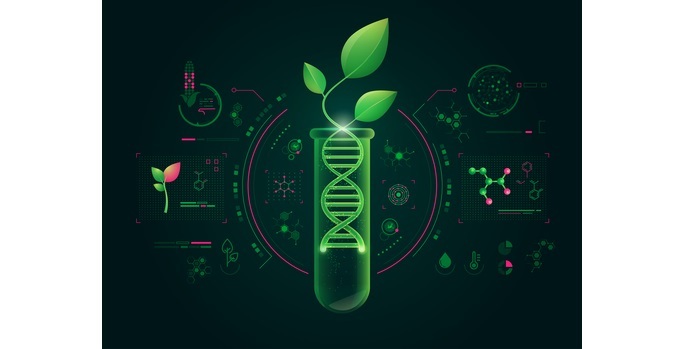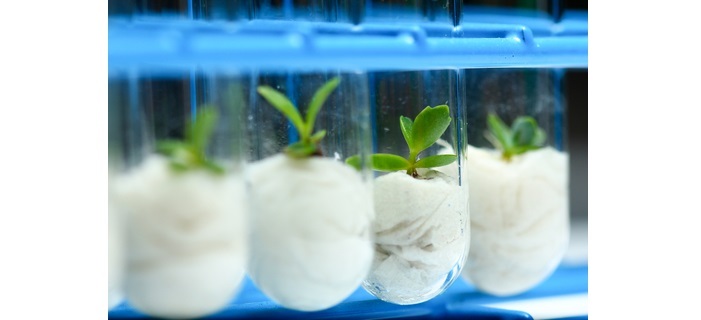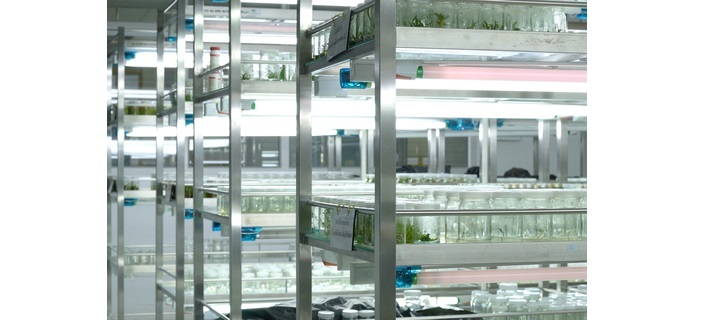
 Data Structure
Data Structure Networking
Networking RDBMS
RDBMS Operating System
Operating System Java
Java MS Excel
MS Excel iOS
iOS HTML
HTML CSS
CSS Android
Android Python
Python C Programming
C Programming C++
C++ C#
C# MongoDB
MongoDB MySQL
MySQL Javascript
Javascript PHP
PHP
- Selected Reading
- UPSC IAS Exams Notes
- Developer's Best Practices
- Questions and Answers
- Effective Resume Writing
- HR Interview Questions
- Computer Glossary
- Who is Who
What Is Synthetic Seed Technology?
What is Synthetic Seed Technology?
Synthetic seed technology is a plant biotechnology technique that involves the production of artificial seeds from plant embryos. The process of producing synthetic seeds involves encapsulating a somatic embryo or shoot-tip culture in a protective coating. The protective coating is composed of a mixture of gelling agents, nutrients, and growth regulators that promote the growth and development of the plant embryo.

Synthetic seeds offer several advantages over conventional seeds. They are easier to handle, transport, and store. They can also be used for planting in areas with adverse environmental conditions, such as drought-prone regions or areas with low soil fertility.
In recent years, synthetic seed technology has gained widespread attention in the agricultural field. This technology has the potential to revolutionize plant breeding and propagation. It is a promising technique that combines the benefits of both sexual and asexual reproduction.
Synthetic seeds are artificially encapsulated plant embryos that can be used for planting, storage, and transportation purposes. They are made using various techniques and methods, depending on the plant species and the desired outcome.
Method of Preparation
The preparation of synthetic seeds involves several steps. The following is a general overview of the method of preparation ?
Step 1: Plant Tissue Culture
The first step in the production of synthetic seeds is the cultivation of plant tissue culture. This involves the isolation and culture of plant cells or tissues in vitro. Plant tissue culture is a technique used to produce large quantities of plant material in a controlled environment. It involves the use of growth media containing nutrients, hormones, and other growth regulators that promote the growth and development of the plant cells or tissues.

Step 2: Somatic Embryogenesis or Shoot-tip Culture
The next step in the production of synthetic seeds is the induction of somatic embryogenesis or shoot-tip culture. Somatic embryogenesis is the process of inducing the formation of embryos from somatic cells. Shoot-tip culture involves the culture of the shoot apex of a plant in vitro. Both techniques are used to produce a large number of plant embryos in a short period.
Step 3: Encapsulation
The third step in the production of synthetic seeds is encapsulation. The plant embryos are encapsulated in a protective coating made of gelling agents, nutrients, and growth regulators. The protective coating serves to protect the embryos from damage during storage, transport, and planting.
Step 4: Maturation
The fourth step in the production of synthetic seeds is maturation. The encapsulated embryos are matured on the growth medium for a specific period. The maturation period varies depending on the plant species and the desired outcome.
Step 5: Storage and Germination
The final step in the production of synthetic seeds is storage and germination. The synthetic seeds are stored in a cool and dry place until they are ready for planting. They can be stored for several months or even years without losing their viability. To germinate the synthetic seeds, the protective coating is removed, and the embryo is planted in a suitable growth medium.
Types of Encapsulation Materials
Various materials can be used to encapsulate plant embryos in synthetic seed technology. The choice of encapsulation material depends on the plant species and the desired outcome. Some of the commonly used encapsulation materials are ?
Alginate
Alginate is a natural polymer derived from seaweed. It is widely used in synthetic seed technology due to its ability to form a gel when exposed to calcium ions. Alginate-based coatings provide excellent protection to plant embryos and are easy to prepare.
Sodium Alginate-Calcium Chloride
Sodium alginate-calcium chloride is another common material used for encapsulation in synthetic seed technology. This method involves the formation of beads or capsules using a droplet generator, where droplets of the plant material are mixed with sodium alginate and then dropped into a calcium chloride solution. This method offers good protection to the plant embryos and allows for easy handling and transportation.
Chitosan
Chitosan is a biodegradable polymer derived from the shells of crustaceans. It is commonly used in synthetic seed technology due to its ability to form a protective coating around plant embryos. Chitosan coatings offer good protection against mechanical damage, and they can be easily degraded in the soil, making them an environmentally friendly option.
Gelatin
Gelatin is a protein-based material that is commonly used for encapsulation in synthetic seed technology. It is easy to prepare and can be used to encapsulate a wide range of plant species. Gelatin-based coatings offer good protection to the plant embryos and are easily degraded in the soil.
Applications of Synthetic Seed Technology
Synthetic seed technology has numerous potential applications in the agricultural field. Some of the key applications are ?
Clonal Propagation
Synthetic seed technology can be used for clonal propagation, where a large number of genetically identical plantlets can be produced from a single parent plant. This technique is useful for producing high-yielding crops, disease-resistant plants, and crops with desirable traits.

Plant Breeding
Synthetic seed technology can be used for plant breeding, where new plant varieties can be developed by combining desirable traits from different plant species. This technique can be used to produce crops with improved yields, better quality, and resistance to environmental stressors.
Germplasm Preservation
Synthetic seed technology can be used for germplasm preservation, where plant embryos can be stored for long periods without losing their viability. This technique is useful for conserving endangered plant species and preserving genetic diversity.
Seedling Production
Synthetic seed technology can be used for seedling production, where seedlings can be produced in large quantities for commercial purposes. This technique is useful for producing seedlings for reforestation, landscaping, and horticulture.
Limitations of Synthetic Seed Technology
Although synthetic seed technology offers numerous benefits, there are also some limitations to this technique. Some of the key limitations are ?
Genetic Stability: Synthetic seeds produced using somatic embryogenesis may not be genetically stable. This means that the offspring may not be identical to the parent plant, leading to genetic variation and reduced yield.
Cost: Synthetic seed technology can be expensive due to the high cost of equipment, materials, and labor involved in the production process.
Technical Complexity: The production of synthetic seeds involves several technical steps that require specialized equipment, materials, and expertise. This can make the process complex and time-consuming.
Conclusion
Synthetic seed technology is a promising technique that offers numerous benefits in the agricultural field. It has the potential to revolutionize plant breeding, propagation, and preservation. The method of preparation involves the encapsulation of plant embryos in a protective coating made of gelling agents, nutrients, and growth regulators.
Various materials can be used for encapsulation, depending on the plant species and the desired outcome. Although synthetic seed technology has some limitations, its potential applications make it a promising technique for the future of agriculture.

